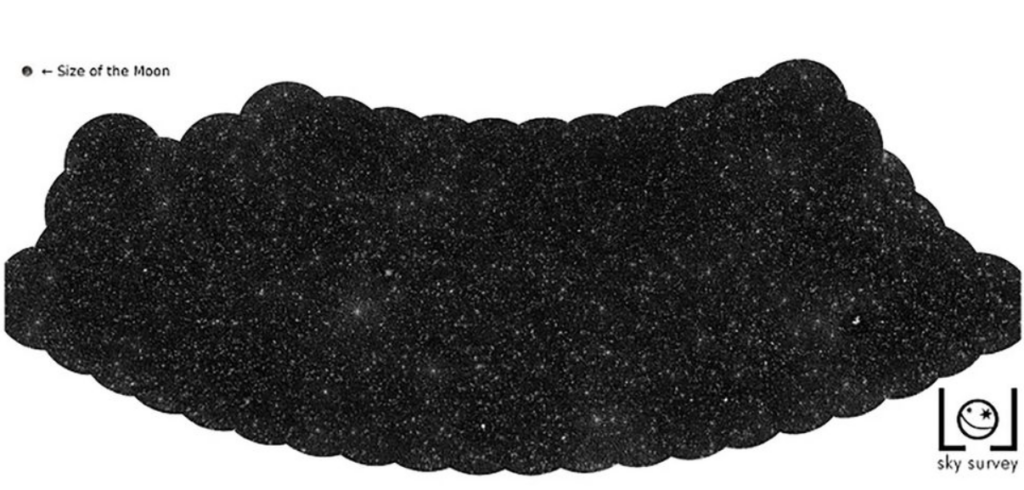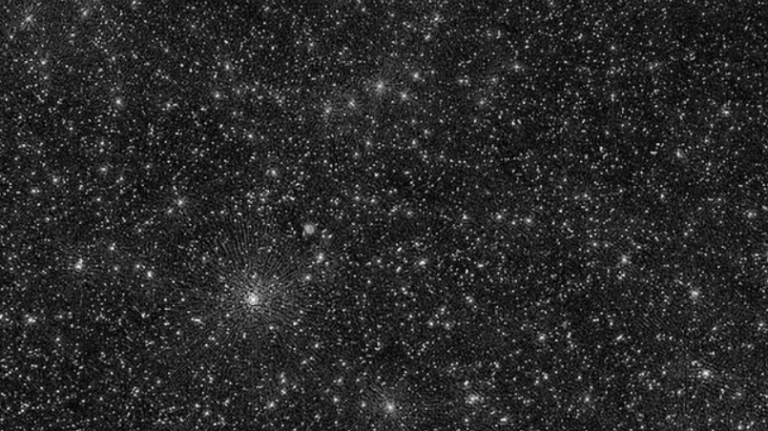The map uncovers 25,000 supermassive black holes in the night sky, distinguishing them from stars.
A stunning map of the night sky from outer space has been unveiled by astronomers from around the world. This incredible map depicts 25,000 supermassive black holes, although confusingly, no stars are present. To put it into context, you might be wondering how this is even possible because black holes don’t usually radiate light. Well, actually, it is not quite true, or rather it is only half of the truth.
Black holes themselves cannot be seen with certain telescopes but if it collides with a star or any other body then due to the strong gravitational forces, it rips the object apart forming a flattened accretion disk around the black hole.
In this disk, the material steadily revolve at such high velocity that it approaches some fraction of the velocity of light. Sometimes the black hole’s magnetic field causes some of this material to be ejected from the black hole in the form of particle jets, which are produced at the two poles of the magnetic field.
These are called relativistic jets and they have the effect of radiating a lot of energy in the form of radio waves. To observe this, astronomers turned to the Low Frequency Array (LOFAR), which is an array of 52 radio telescopes situated across Europe.

“The work was done on extremely challenging data and this is a culmination of efforts we have been making for many years” said Francesco de Gasperin of Universität Hamburg, Germany, who formerly studied at Leiden University. “To create these pictures, there was a need to develop new techniques for decoding the signals received from the sky. ”
The beautiful map displays low-frequency radio emission of 25,000 quasars Shields at the center of distant galaxies and covers only roughly 4% of the area that a typical constancy occupies in the northern half of the night sky. They hope that in the future, they will be able to make a map of the complete sky locality of these objects, observable in the northern hemisphere.
The map was made for a study that was submitted to be featured in the Astronomy & Astrophysics journal, although it has not yet been published.
Analysis: computer algorithms help us see the universe
Another challenge that is associated with detecting radio waves from supermassive black holes is that they produce low frequency radio waves. This may not present a problem usually, but it is an issue for Earth-based radio telescopes because of the ionosphere. Signals with frequency below 3MHz are not reflected by the ionosphere at all while those above 30MHz are significantly modified.
As Reinout van Weeren, from the Leiden Observatory, who also contributed to the study says it is like attempting to look at the world through a glass of water. The waves present on the water surface bend the rays of light and hence confuse the vision when one tries to look up. To overcome this obstacle, researchers have employed an algorithm in a supercomputer that helps to eliminate the interference of ionosphere on the signals. This algorithm changes the observations at every four seconds for 256 hours of observation time.
Huub Röttgering from Leiden Observatory and the scientific director of the research stated his happiness to see the hard work of several years of software development pay off. However, it should be pointed out that computer algorithms have been widely used in astronomy for a long time.
For instance, Katie Bouman went viral for her contributions in the creation of an algorithm that would merge data from the Event Horizon Telescope to create the first-ever image of event horizons of black holes. And as our computers become more and more powerful, the capability of these algorithms for unlocking secrets of the universe will grow.
Do not forget to share your opinion with us to provide you with the best posts !




0 Comments